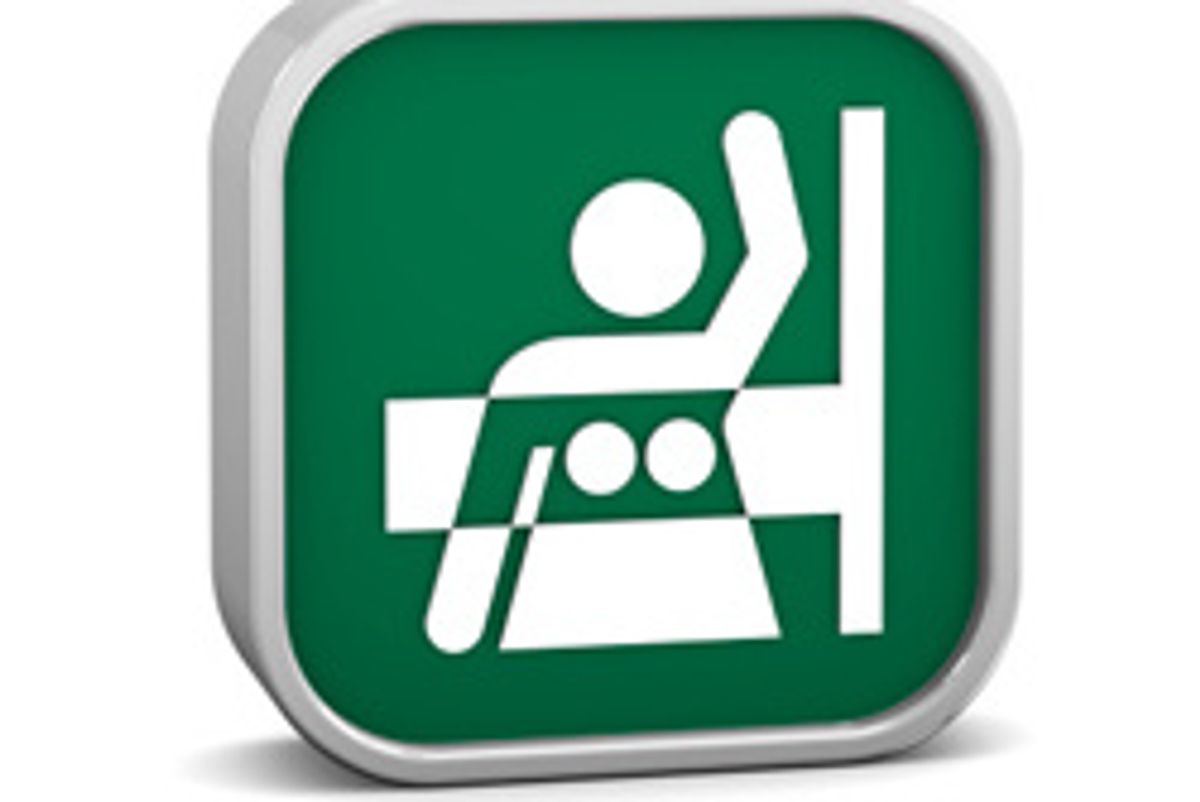This article has been archived. We will no longer be updating it. For our most up-to-date information, please visit our breast cancer information here.
If you found out you were at high risk for breast cancer, what would you do?
Angelina Jolie made a very brave decision when she recently opted for, and announced, she had undergone a prophylactic double mastectomy after finding out she carried a genetic mutation.
More: Prophylactic Mastectomy: Why This Woman Chose It
A harmful mutation of the BRCA1 or BRCA2 gene puts a woman at a much higher risk of developing breast and/or ovarian cancer (men with the mutation also face an increased risk of breast cancer). Jolie's decision to get tested was fueled by her mother's death from ovarian cancer when she was just 56.
In a recent op-ed in the New York Times, Jolie writes:
"I wanted to write this to tell other women that the decision to have a mastectomy was not easy. But it is one I am very happy that I made. My chances of developing breast cancer have dropped from 87 percent to under 5 percent. I can tell my children that they don't need to fear they will lose me to breast cancer."
The choice to proactively remove healthy breast tissue can be fraught with indecision as well as doubt. Consulting with various physicians and researching the options can be time-consuming as well. But knowing that you're at high risk for developing a potentially deadly disease is like having a rare glimpse into a window of your possible future. And if the future is a bleak or dangerous one, why not do everything in your power to turn it around if given the opportunity?
I was diagnosed with breast cancer in my 30s, and, like Jolie, I opted for a prophylactic mastectomy to give me some peace of mind. Click here to read more about my personal experience.
Prophylactic mastectomy is not necessarily the right decision for everyone. For women at high risk of developing breast cancer, there are other options: watchful surveillance with screening by mammography, MRI and clinical breast exams, treatment with estrogen-blocking medications (called chemo-prevention) like tamoxifen, raloxifene (Evista) or exemestane (Aromasin) and making or maintaining healthy lifestyle practices—maintaining a healthy weight, getting plenty of exercise, limiting your alcohol use and not smoking (or quitting if you do smoke). Of course, there's also the controversy of hormone use during menopause and the question of whether or not it increases your risk for breast cancer.
More: Breast Cancer Guide
What a harmful BRCA1 or BRCA2 mutation really means
If you inherit this mutation, you're at an increased lifetime risk of developing breast and/or ovarian cancer at an early age (before menopause). It's also likely you'll have multiple, close family members who already have or will be diagnosed with one of those cancers. You're also at risk for developing other cancers, including cervical, uterine, pancreatic and colon.
If you do test positive for a genetic mutation, it doesn't necessarily mean you will definitely develop breast or ovarian cancer. But it does increase your risk—making it five times more likely—compared to the person without the mutation.
To put it more clearly: Women in the general population have about a 12 percent chance (120 out of 1,000) of developing breast cancer in their lifetime. If you've inherited a harmful genetic mutation, that number changes to 60 percent (600 out of 1,000).
The genetic test is simple, performed either through a blood sample or a swab of the inside of your cheek. Results can take up to several weeks, and it's recommended to get genetic counseling before and after the test with a health care professional who is experienced in cancer genetics. The counselor will ask about your family's medical history and will discuss the medical implications of a positive or negative result, the psychological risks and benefits of the results and the risk of passing on a mutation to a child.
Genetic testing is not for everyone. Only about 5 percent of breast cancers are caused by the BRCA1 or BRCA2 genetic mutation. And while the test is costly – it can range anywhere from several hundred to several thousand dollars – and insurance coverage varies, the cost of saving your life may be priceless.
The Mayo Clinic offers these helpful tips for preparing for a test or visit with a genetic counselor:
- Gather your family's medical history, especially for close relatives.
- Document your own medical history, including records from specialists or previous genetic testing.
- Write down any questions you may have.
- Consider asking a friend or family member to accompany you to take notes or ask questions.
Here are some other resources to help you make an informed decision:
https://www.cancer.gov/cancertopics/factsheet/Risk/BRCA
https://ww5.komen.org/BreastCancer/GeneMutationsampGeneticTesting.html
https://www.cnn.com/2013/05/15/health/brca-expert-qa/?hpt=hp_bn13






